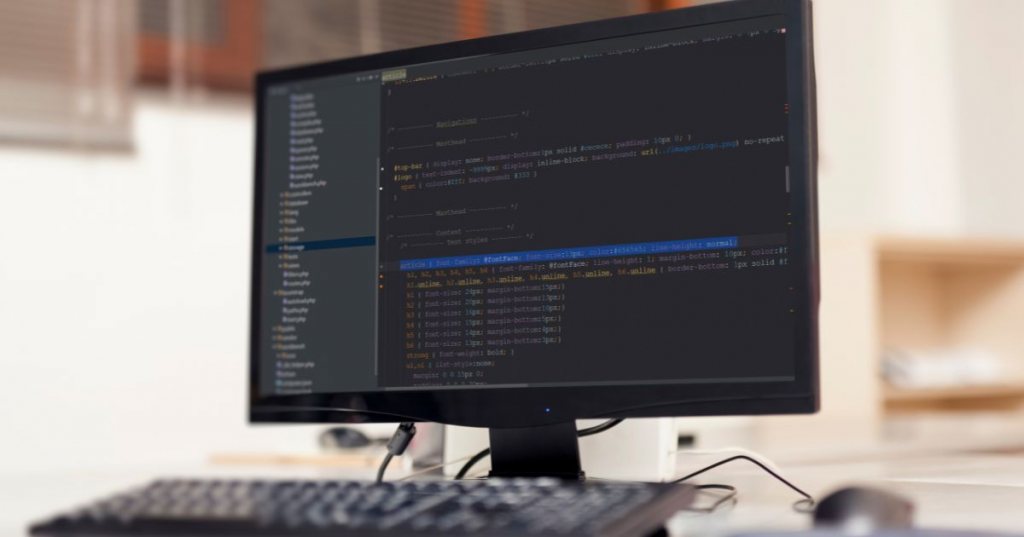How to Become a Java Full-stack Developer? Essential Skills
In today's fast-evolving tech landscape, the demand for versatile and skilled professionals is higher than ever. Among these, Java Full-stack Developers stand out as key players in the development of robust and scalable web applications. But what exactly is a Java Full-stack Developer? What roles and responsibilities do they undertake? How can one embark on a journey to become a proficient full-stack developer?
This article delves into these questions, providing a comprehensive guide on the role and duties of a Java Full-stack Developer, the pathway to entering this field, the essential skills for freshers, and insights into the salary prospects for these tech-savvy professionals.
What is a Java Full-stack Developer?

A Java Full-stack Developer is a professional who has expertise in both front-end and back-end development using Java and related technologies. This role involves designing, developing, and maintaining complete applications or systems that can span across the entire stack of a web application, from the user interface to the database and everything in between.
What Does a Java Full-Stack Developer Do?
A Full-Stack Java Developer is responsible for developing both the front-end and back-end of web applications using Java and related technologies. This role involves a broad range of tasks and requires proficiency in multiple technologies and tools to ensure the seamless functionality, scalability, and performance of web applications. Below are the primary responsibilities and activities of a Full-Stack Java Developer:
Front-End Development

A Full-Stack Java Developer often engages in front-end development tasks as part of their role in building web applications. Front-end development involves creating and maintaining a website or web application's user interface (UI) and user experience (UX) components.
Design and develop user interfaces (UIs) using HTML, CSS, and potentially JavaScript frameworks like React or Angular. It includes creating the visual layout, styling elements, and ensuring a responsive design that adapts to different devices.
Frameworks and Libraries: Utilizing front-end frameworks and libraries such as Angular, React, or Vue.js to build interactive and dynamic user interfaces.
Back-End Development
Back-end development involves working with server-side technologies to manage the logic, data, and functionality that power the application behind the scenes.
Server-Side Logic: Write server-side code primarily using Java and related frameworks like Spring. This code handles the core logic of the application, such as processing user requests, interacting with databases, and performing complex calculations.
Frameworks: Implementing applications using back-end frameworks like Spring Boot, Spring MVC, and Hibernate.
Database Management: Work with databases like MySQL or PostgreSQL to store, manage, and retrieve application data efficiently. Full-Stack Java Developer writes queries to interact with the database and ensure data integrity.
APIs and Web Services: Developing RESTful and SOAP APIs to facilitate communication between front-end and back-end systems. Design and develop APIs (Application Programming Interfaces) that mediate communication between the front-end and back-end. APIs allow the front end to access and manipulate data on the server side.
Additional Responsibilities
In addition to front-end and back-end development tasks, Java Full-Stack Developers may have additional responsibilities that contribute to the overall success of web development projects. These responsibilities often vary depending on the specific requirements of the project, the size of the development team, and the organization's workflow.
Requirements Gathering and Analysis: Java Full-Stack Developers collaborate with stakeholders, including clients, product managers, and business analysts. They will translate business requirements into technical specifications and determine the optimal technology stack for implementation.
Architecture and Design: Participating in architectural discussions and decisions regarding the overall design and structure of the application. Java Full-Stack Developers design scalable, maintainable, modular software architecture that meets current and future needs.
Code Review and Quality Assurance: Conducting code reviews to ensure adherence to coding standards, best practices, and quality guidelines. Java Full-Stack Developers perform unit testing, integration testing, and regression testing to identify and fix defects in the codebase.
Performance Monitoring and Optimization: Monitoring application performance and identifying opportunities for optimization, such as reducing latency, improving response times, and optimizing resource usage. Java Full-Stack Developers implement performance profiling and tuning techniques to optimize critical areas of the application.
Documentation and Knowledge Sharing: Documenting technical specifications, architecture diagrams, and implementation details for the benefit of the development team and future maintainers. Java Full-Stack Developers share knowledge and best practices with other team members through code reviews, brown bag sessions, and technical presentations.
Continuous Integration and Deployment (CI/CD): Setting up and maintaining continuous integration and deployment pipelines to automate the build, test, and deployment processes. Configuring deployment environments and monitoring deployment pipelines to ensure smooth and reliable releases.
Research and Innovation: Keeping abreast of the latest trends, technologies, and industry best practices in web development. Conducting research and prototyping to explore innovative solutions and propose improvements to existing processes and technologies.
Java Full-Stack Developers play a pivotal role in web development projects, and their responsibilities extend beyond coding to encompass various aspects of project planning, execution, and delivery.
How to Become a Java Full-stack Developer?

The journey to becoming a Full-Stack Developer can be exciting and challenging. Here's a roadmap to guide you through the process:
Solidify Your Foundations
Solidifying your foundations is crucial when aiming to become a Full-stack Developer, as it provides you with a strong base to build upon as you delve deeper into various technologies and frameworks.
Master the Fundamentals: Gain a strong understanding of core programming concepts like variables, data types, operators, control flow, and functions. These can be achieved through online courses, coding boot camps, or self-study with resources like books and tutorials.
Object-Oriented Programming (OOP): Grasp object-oriented programming principles like classes, objects, inheritance, polymorphism, and encapsulation. Java is an object-oriented language, so mastering OOP is essential.
Front-End Technologies
Some key front-end technologies you should learn to embark on your journey as a Full-stack Developer:
HTML & CSS: These are the building blocks of web pages. Learn HTML for structuring content and CSS for styling and layout. Numerous online resources and interactive tutorials can help you get started.
JavaScript: This versatile language powers interactivity on web pages. Explore JavaScript fundamentals, including variables, functions, DOM manipulation, and event handling. Build small projects to solidify your understanding.
Front-End Frameworks: Consider learning a popular front-end framework like React, Angular, or Vue.js. These frameworks offer pre-built components and functionalities, streamlining development and enhancing code maintainability.
Back-end development with Java
On the back-end side of things, Java reigns supreme for Full-Stack Developers.
Core Java: Dive deep into Java syntax, data structures, collections, object-oriented concepts, and exception handling. Online courses, tutorials, and books can provide a comprehensive foundation.
Java Frameworks: Explore popular Java frameworks like Spring Boot (a full-stack framework) or Spring MVC (for building web applications). These frameworks simplify common back-end development tasks.
Databases: Learn to work with relational databases like MySQL or PostgreSQL. Grasp concepts like database schema design, querying data (using SQL), and interacting with databases from Java applications.
Sharpen Your Skills
Sharpening your skills is essential for becoming a proficient Full-stack Developer who can tackle both front-end and back-end development tasks effectively.
Build Projects: The best way to solidify your learning is by applying it! Start with small personal projects and gradually increase complexity. Focus on building full-stack applications that utilize both front-end and back-end skills.
Version Control: Learn a version control system like Git for tracking code changes, collaborating with others, and maintaining a development history. GitHub is a popular platform that integrates with Git.
Continuous Learning
The world of web development is a dynamic ecosystem, constantly evolving with new technologies, frameworks, and best practices emerging regularly. For a Full-Stack Developer, the ability to learn continuously is not just an advantage - it's a necessity.
Stay Updated: The tech landscape is constantly evolving, with new advancements and best practices emerging regularly. For Full Stack Java Developers, staying updated is crucial for maintaining relevance and competitiveness in the industry. Make a habit of staying updated with the latest advancements in Java, front-end frameworks, and web development best practices.
Contribute to Open Source: Consider contributing to open-source projects. This is a fantastic way to gain real-world experience, collaborate with other developers, and showcase your skills.
Additional Tips
Mastering the core technical skills is crucial for becoming a Full-Stack Developer, but there's more to it than just code. Here are some additional tips to refine your approach and set yourself apart:
Practice Problem-Solving: Coding is all about solving problems. Regularly participate in online coding challenges and practice algorithmic problem-solving to hone your critical thinking skills.
Network and Build Connections: Attend meetups, conferences, and online developer communities. Network with other developers, build connections and learn from their experiences.
Consider Formal Education: While not mandatory, a bachelor's degree in computer science or a related field can provide a strong theoretical foundation and potentially open doors to certain career paths.
Remember, becoming a Full-Stack Developer takes time, dedication, and consistent effort. The path may not be linear, but with perseverance, a passion for learning, and a commitment to building your skillset, you can achieve your goals.
Java Full-stack Developer Skills for Freshers

Here's a breakdown of essential Java Full-Stack Developer skills for freshers:
Database Management
Database management is a crucial skill for Java Full-Stack Developers, and even more so for freshers entering the field.
SQL Databases: Learn about relational databases such as MySQL, PostgreSQL, or SQLite. Understand how to design schemas, write SQL queries, and perform CRUD operations.
NoSQL Databases: Get acquainted with NoSQL databases like MongoDB, which are useful for handling unstructured data and scalable applications.
Soft Skills
While technical skills are crucial for Java Full-Stack Developers, soft skills are equally important, especially for freshers entering the workforce. Soft skills encompass personal qualities that contribute to successful communication, collaboration, and overall work ethic.
Problem-Solving: Enhance your problem-solving abilities and logical thinking.
Communication: Develop strong communication skills to collaborate effectively with team members and stakeholders.
Time Management: Learn to manage your time effectively to balance learning, development, and other responsibilities.
Build Projects
Building projects is an ongoing process that fosters continuous learning and skill development.
Practical Application: Apply what you’ve learned by building real-world projects. Start with small projects and gradually take on more complex applications.
Portfolio: Create a portfolio showcasing your projects. It is crucial for job applications and demonstrating your skills to potential employers.
Java Full-Stack Developer Salary

According to data from Glassdoor, the average base salary for a Java
Full Stack Developer in India is ₹540,000 per year. This figure provides a benchmark for what professionals in this role can expect to earn, serving as a useful reference for both job seekers and employers in understanding typical salary expectations.
On top of the base salary, Java Full Stack Developers receive an average additional cash compensation of ₹40,000 per year. This additional compensation varies, with the reported range from ₹11,000 to ₹64,000 per year. This component of the compensation package often includes bonuses, performance incentives, or other financial rewards that recognize and reward the developer's contributions beyond their base salary.
Additional compensation can increase with experience or performance and advance in their careers. Furthermore, salaries can vary significantly based on factors such as the city of employment, the size and prestige of the employer, and the individual’s experience and skill set. Metropolitan areas like Bangalore, Mumbai, and Delhi may offer higher salaries compared to other regions due to the higher cost of living and concentration of tech companies.
Conclusion
In conclusion, a Java Full-stack Developer is a multifaceted professional skilled in both front-end and back-end development using Java and related technologies. They play a crucial role in building comprehensive web applications, handling everything from user interface design to server-side logic and database management. For freshers entering the field, it's essential to build a strong foundation in these areas and continuously update their knowledge to stay current with evolving technologies.
The future is full-stack, and with the skills and dedication, you can be a part of building it. Let SkillTrans become one of your trusted companions on your professional journey. By joining our comprehensive courses, you can start your path to becoming a proficient Java Full-stack Developer.

Meet Hoang Duyen, an experienced SEO Specialist with a proven track record in driving organic growth and boosting online visibility. She has honed her skills in keyword research, on-page optimization, and technical SEO. Her expertise lies in crafting data-driven strategies that not only improve search engine rankings but also deliver tangible results for businesses.



